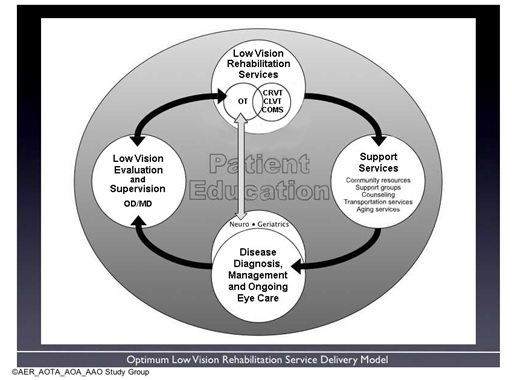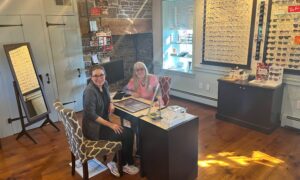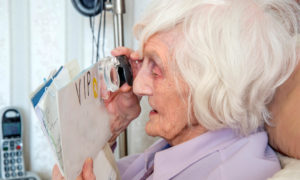
June 24, 2015
Tailoring services and products to low vision patients will likely be a practice builder in the coming years,findings from the National Eye Institute suggest. The NEI, which defines low vision as people for whom the best-corrected visual acuity is less than 6/12 (‹20/40) in the better-seeing eye (excluding those who were categorized as being blind by the U.S. definition), reports that by 2030, the number of low vision patients in the U.S. will reach nearly five million.
The risk of severe vision loss increases with age. The incidence of chronic diseases, such as age-related macular degeneration, cataracts, diabetic retinopathy and glaucoma, increases the longer we are alive. Some studies show 50 percent or more of people over the age of 60 suffer from some level of dry eye syndrome. Dry eye syndrome also becomes worse as we age. All of these conditions can contribute to decreased vision.
The Baby Boomers are the second largest demographic population in the U.S. (there are about 1 million more millennials). The leading edge of the Baby Boomers already hit 65 a few years ago, so the total number of people with vision loss as a result of chronic disease is going to become larger and larger over the next 20 years.
From a practice management perspective, any large population of people, or increasing number of people, affected by chronic conditions resulting in eye-related problems should be of interest to all practices. It’s always better to think things through when you have time, rather than being rushed when there is a patient in front of you.
So, let’s drill down. What are your protocols for managing low vision patients? The graphic below shows the continuum of care for low vision patients. You can find more information about this model HERE and HERE.
 Compare the model on the left, developed by leaders from optometry, ophthalmology, low vision, low vision rehabilitation and the low vision community, with your protocols for managing low vision patients. Not everyone will need all the services identified in the Optimum Low Vision Rehabilitation Service Delivery Model, but for complete care, it is important that we understand the entire continuum of care potentially necessary to successfully manage low vision patients.
Compare the model on the left, developed by leaders from optometry, ophthalmology, low vision, low vision rehabilitation and the low vision community, with your protocols for managing low vision patients. Not everyone will need all the services identified in the Optimum Low Vision Rehabilitation Service Delivery Model, but for complete care, it is important that we understand the entire continuum of care potentially necessary to successfully manage low vision patients.
For more information to help with low vision patients, here are helpful resources:
• The American Optometric Association
• American Macular Degeneration Foundation
• The International Society for Low-Vision Research and Rehabilitation
You can also go to the web sites of almost all of the major manufacturers and distributors of low vision aids.
Take this week to upgrade your internal protocols for this special population of patients so that they receive the care they deserve.



























